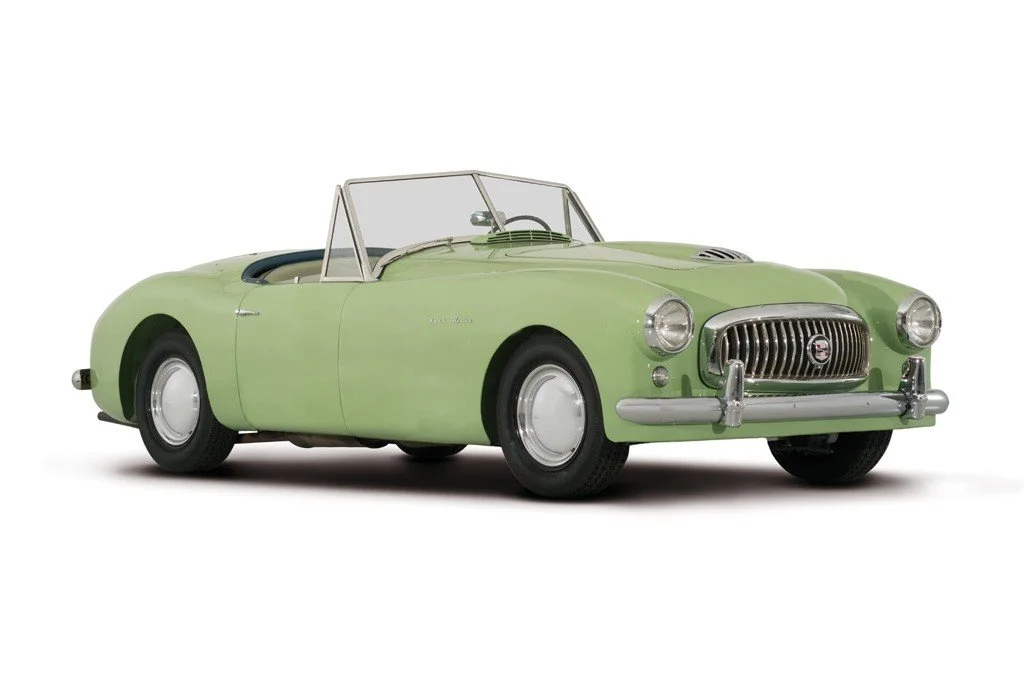 Image 1 of 13
Image 1 of 13

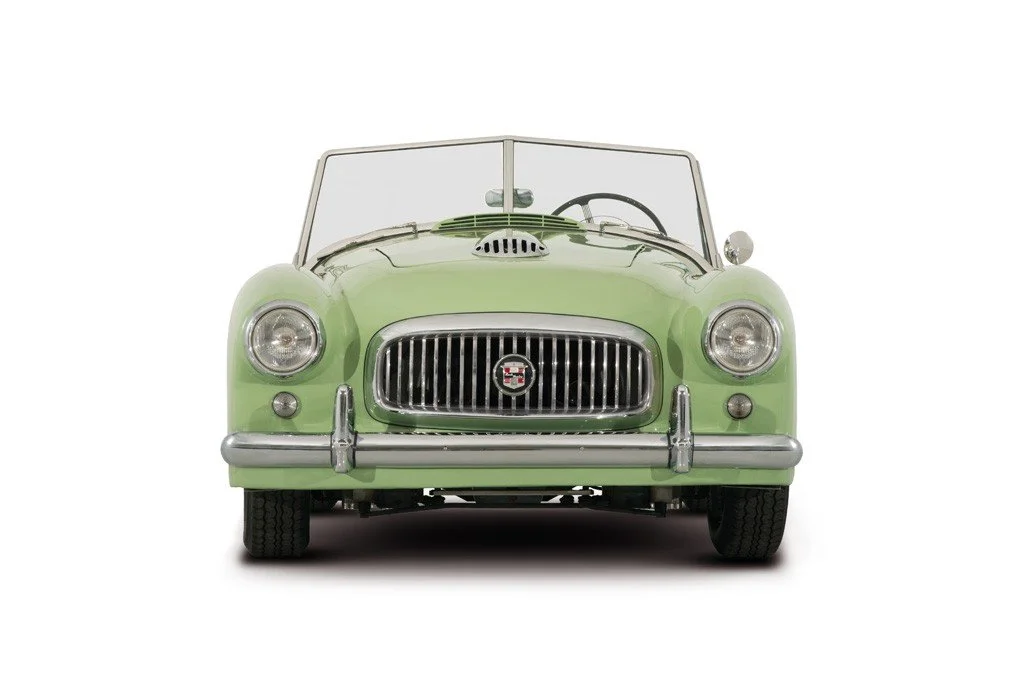 Image 2 of 13
Image 2 of 13

 Image 3 of 13
Image 3 of 13

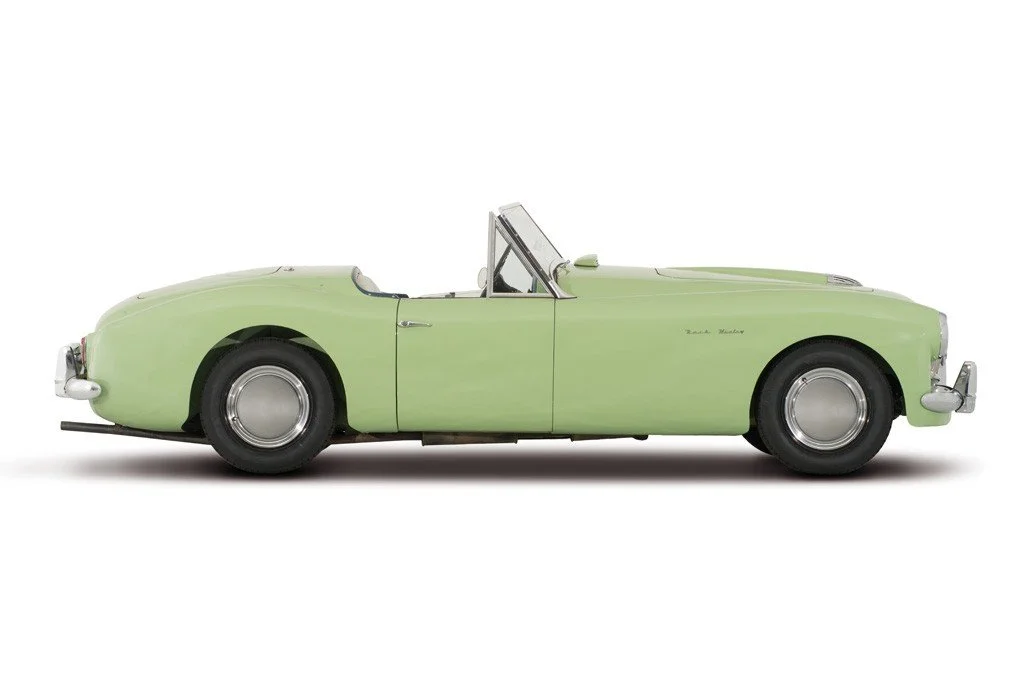 Image 4 of 13
Image 4 of 13

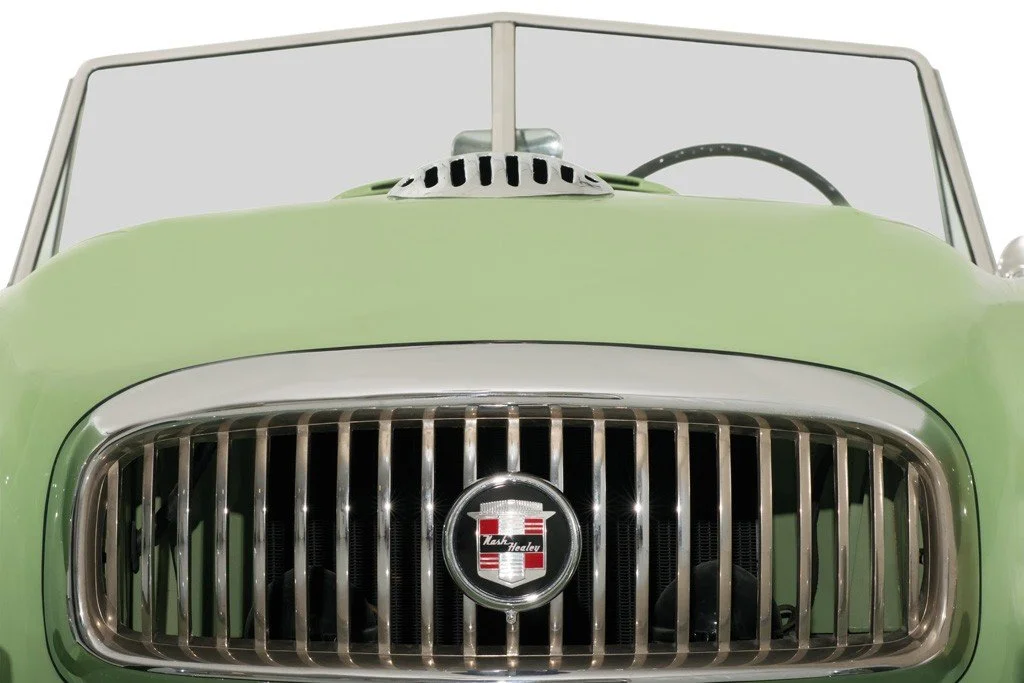 Image 5 of 13
Image 5 of 13

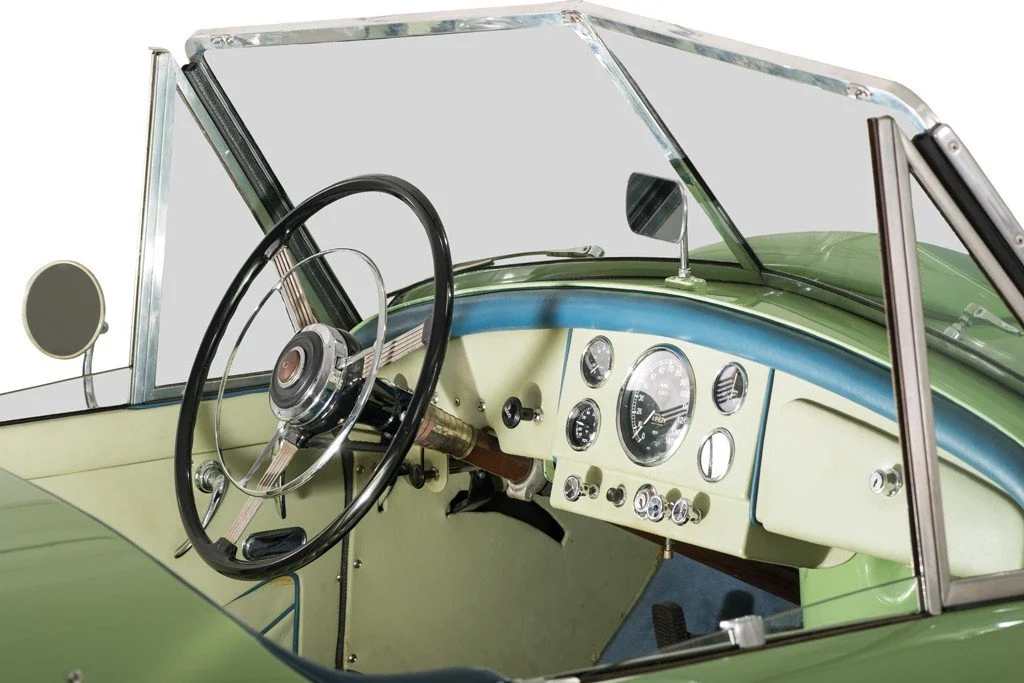 Image 6 of 13
Image 6 of 13

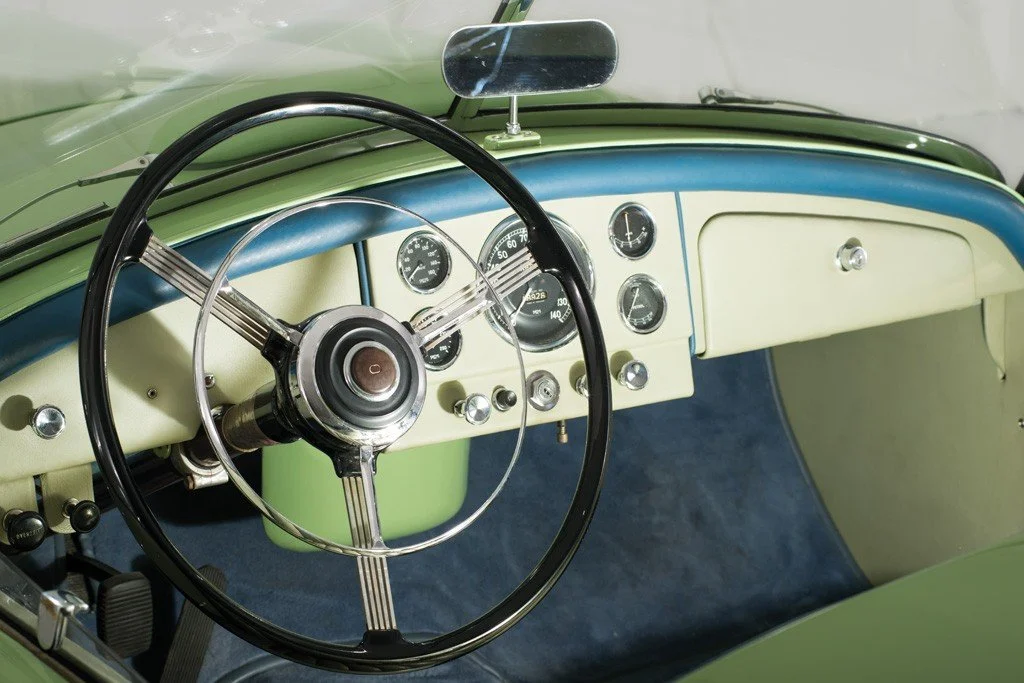 Image 7 of 13
Image 7 of 13

 Image 8 of 13
Image 8 of 13

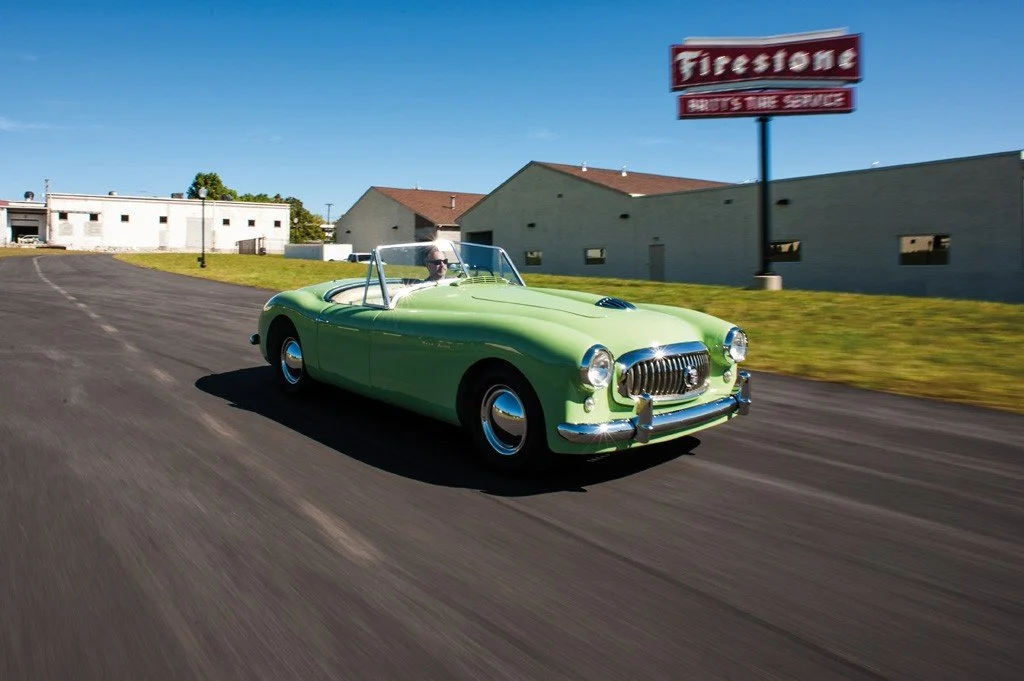 Image 9 of 13
Image 9 of 13

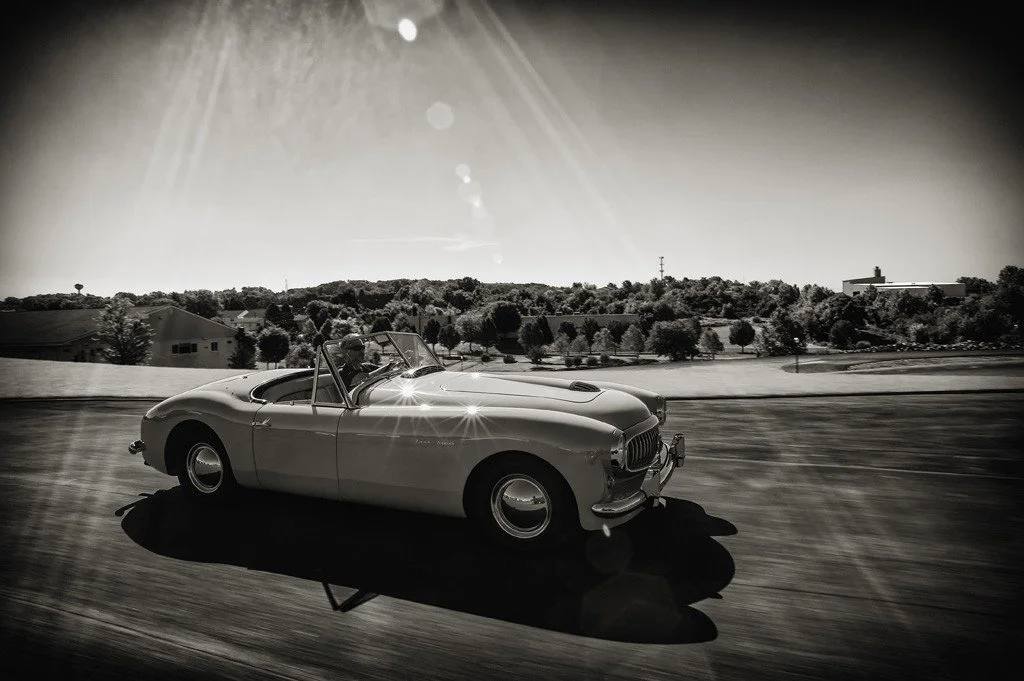 Image 10 of 13
Image 10 of 13

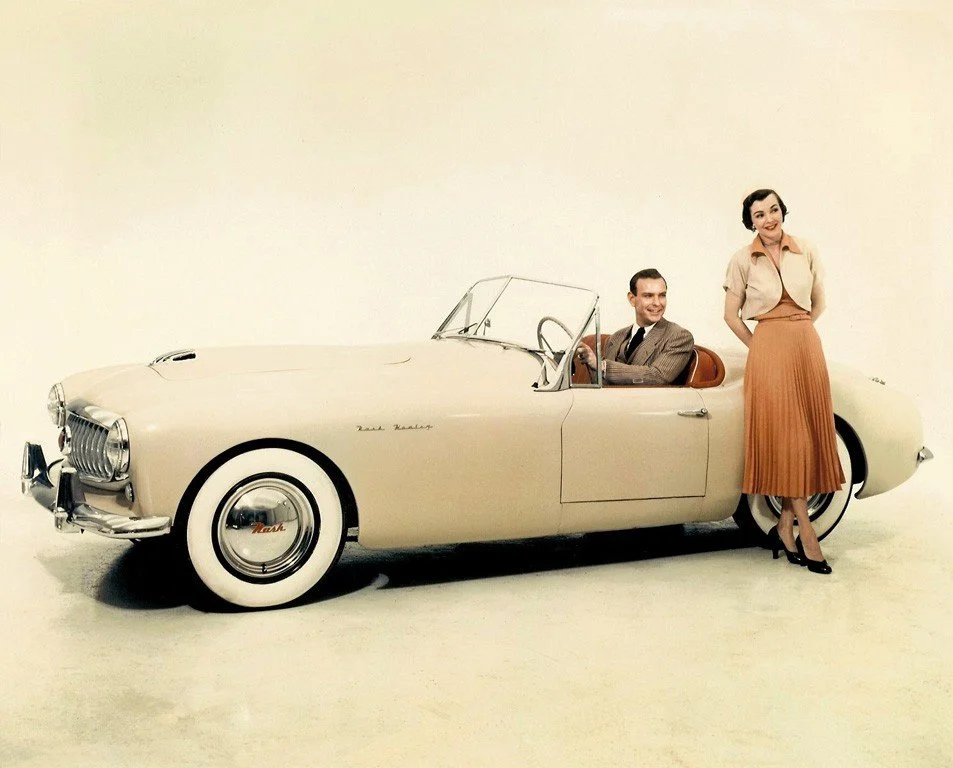 Image 11 of 13
Image 11 of 13

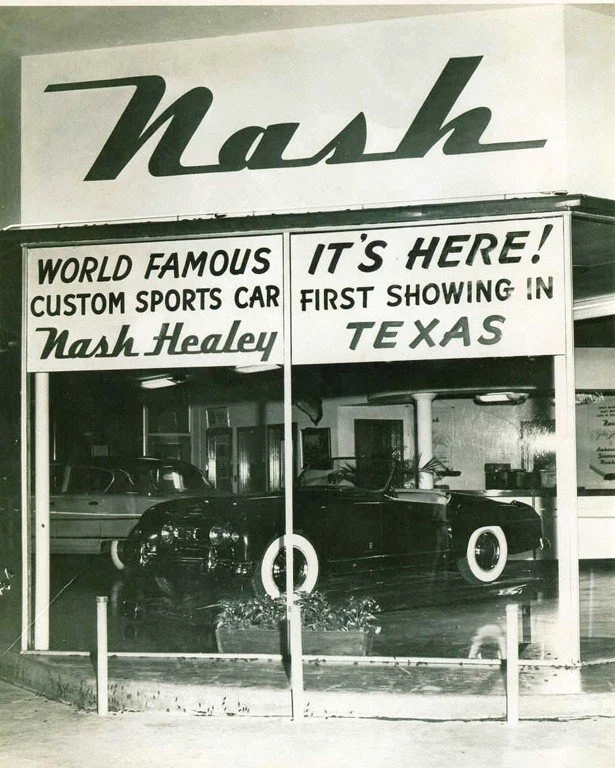 Image 12 of 13
Image 12 of 13

 Image 13 of 13
Image 13 of 13














1951 Nash-Healey LeMans Roadster 🇺🇸
-
Tony Rolt and Duncan Hamilton debuted the prototype at Le Mans in 1950. It was the first-ever Le Mans entry to have an overdrive transmission. Not only was the car one of the 29 finishers from the field of 66, but it also finished in fourth place. This outstanding achievement sealed Healey’s contract with Nash for a limited production run of the road cars.
Just 104 first series, alloy-bodied Nash-Healey LeMans Roadsters were originally built, and few survive today. Fewer still are as attractive as this specimen. Professionally restored, this car is finished in Mint Green (one of three known in this color) with a tan cloth top and a gray interior with smart blue piping. It is also equipped with Cibie headlights, correct Nash-Healey wheel covers, blackwall tires and pull-up side windows, and it retains the correct Nash engine with the rare factory-original aluminum cylinder head. Factory-fitted with a three-speed manual transmission with overdrive, this LeMans Roadster also includes full instrumentation, a heater, spare tire and jack.
In 2009, this Alloy-Body Roadster was offered for sale at the Automobiles of Amelia Island auction presented by RM Auctions.
This rare Nash-Healey LeMans joined the Nicola Bulgari Car Collection in May 2014, when it was bought at the 2014 Worldwide Auctioneers. -
Company
Nash-Kelvinator CorporationWheelbase
102inInterior trim
GrayBrakes
front and rear drumsMake
Nash-HealeyLength
170inEngine
inline 6 - 234.8cidTires
6.40x15Model
Nash-Healey LeMans RoadsterWidth
66inCarburetor
2 carb. SU 1-barrelOriginal Price
$4,063Body style
2-door RoadsterWeight
2598lbsHorsepower
125hp @ 4000rpmProduction
104Model year
1951Exterior paint
Mint Green/Tan cloth topTransmission
Borg Warner T-86E 3-speed manual + overdrive -
The Nash-Healey is a two-seat sports car that was produced for the American market between 1951 and 1954. Marketed by Nash-Kelvinator Corporation with the Nash Ambassador drivetrain and a European chassis and body, it served as a halo (or image) vehicle, or flagship car, for the automaker to promote the sales of the other Nash models. The Nash-Healey was the product of the partnership between Nash-Kelvinator Corporation and British automaker Donald Healey. Later on, the car was restyled by Pinin Farina and subassembly began in Italy. Just 507 Nash-Healeys were built in the four production years.
Donald Healey and Nash-Kelvinator CEO George W. Mason met on the Queen Elizabeth, an ocean liner going from the United States to Great Britain. Healey was returning to England after his attempt to purchase engines from Cadillac, but General Motors had declined his idea. He wanted to expand production of the Healey Silverstone that race car driver Briggs Cunningham had customized with Cadillac’s new 1949 overhead-valve V8 engine. Mason and Healey met over dinner and a production plan ensued during the remainder of the voyage.
The 1951 Nash-Healey was the first post-war sports car from a major American automaker, and beat out the Chevrolet Corvette that was introduced in 1953. The earlier Kurtis-Kraft and the Muntz Jet were not actual production cars in the true sense of the word. The first production version was exhibited at the Miami Auto Show in February 1951.
Nash Motors supplied the Donald Healey Motor Company with the powertrain components: the Ambassador's inline six-cylinder OHV 234.8 cid engine and three-speed manual transmission with Borg-Warner overdrive, plus torque tube and differential. Healey fitted a lighter, higher-compression aluminum cylinder head (in place of the cast-iron stock item) with twin SU carburetors that were popular on British sports cars at the time. This increased power from the stock 112 hp version to 125 hp. Compared to other contemporary British sports cars, the Nash-Healey's engine was long, heavy, and bulky. However, Donald Healey's original plan was to use an even heavier 331 cid Cadillac V8 engine and the car was designed with an engine bay that allowed a few later owners to convert their cars to V8 power.
The chassis was a widened and reinforced Healey Silverstone box-section ladder-type steel frame. The independent front suspension, also Healey Silverstone, was by coil springs, trailing link, and a sway bar. The rear suspension featured Nash's rear end and coil springs replaced the Silverstone’s leaf springs, while the beam axle was located by Panhard rod.
Healey designed the aluminum body, which was outsourced. Panelcraft Sheet Metal of Birmingham fabricated the body. It incorporated a Nash grille, bumpers, and other trim. Healey was responsible for the car's final assembly.
The interior featured luxurious leather upholstery, foam rubber cushions, adjustable steering wheel, and a cigarette lighter. Completed vehicles were shipped to the United States for sale through the Nash dealership network.
A prototype was shown at the Paris Motor Show in September 1950. The production model debuted at the February 1951 Chicago Auto Show, and Donald Healey gave the first specimen to Petula Clark.
Donald Healey and his son Geoffrey drove the prototype Nash-Healey to Italy and entered the 1950 edition of the legendary Mille Miglia.
A Nash-Healey served as the course car for the 1951 Carrera Panamericana. Driven by Chuck Stevenson, the Nash-Healey ran ahead of the racers to ensure the way was clear on "the world's greatest road race".
